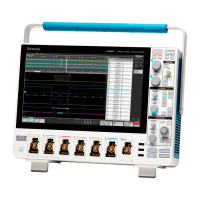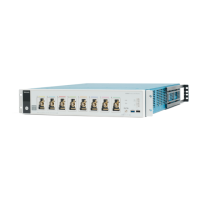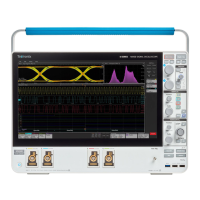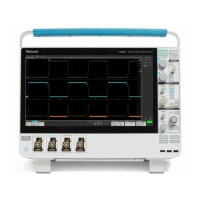Logic trigger concepts
T
rigger the instrument when logic patterns are true. You can set each bit to be active High, Low, or Don't Care. You can also set the logic
thresholds and define the logic (AND, OR, NOR, or NAND).
Setup and Hold trigger concepts
A setup/hold trigger occurs when a data signal changes state inside of the user specified setup and hold times relative to the clock. When
you use setup/hold triggering, you define:
• The channel containing the logic input (the data source) and the channel containing the clock (the clock source)
• The direction of the clock edge to use
• The clocking level and data threshold that the instrument uses to determine if a clock or data transition has occurred
• The setup and hold times that together define a time range relative to the clock
Data that changes state within the setup/hold violation zone triggers the instrument. The next figure shows how the setup and hold times
that you choose position the violation zone relative to the clock.
Setup/hold triggering uses the setup/hold violation zone to detect when data is unstable too near the time it is clocked. Each time trigger
holdof
f ends, the instrument monitors the data and clock sources. When a clock edge occurs, the instrument checks the data stream it is
processing (from the data source) for transitions occurring within the setup/hold violation zone. If any occur, the instrument triggers with the
trigger point located at the clock edge.
The setup/hold violation zone spans the clocking edge as shown above. The instrument detects and triggers on data that does not become
stable long enough before the clock (setup time violation) or that does not stay stable long enough after the clock (hold time violation).
Rise/Fall time trigger concepts
Rise/Fall time triggering is based on the slope (change in voltage/change in time) of a pulse edge.
Use the Rise/Fall trigger to trigger the instrument on pulse edges that traverse between two thresholds at faster or slower rates than the
specified time. You can set up the instrument to trigger on positive or negative edges.
Triggering concepts
2 Series MSO MSO24 and MSO22 241
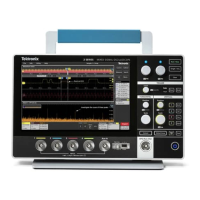
